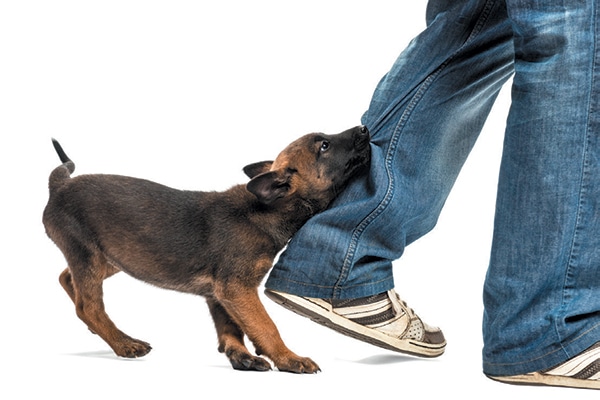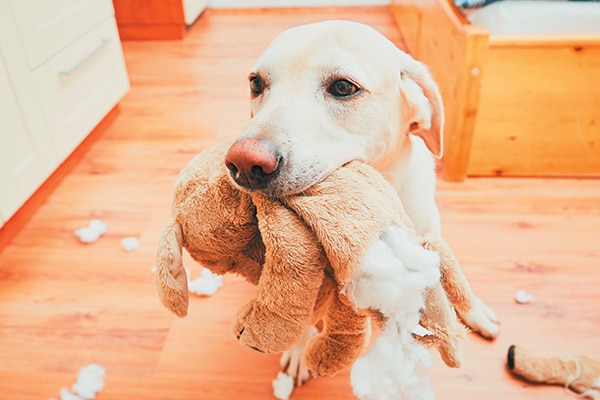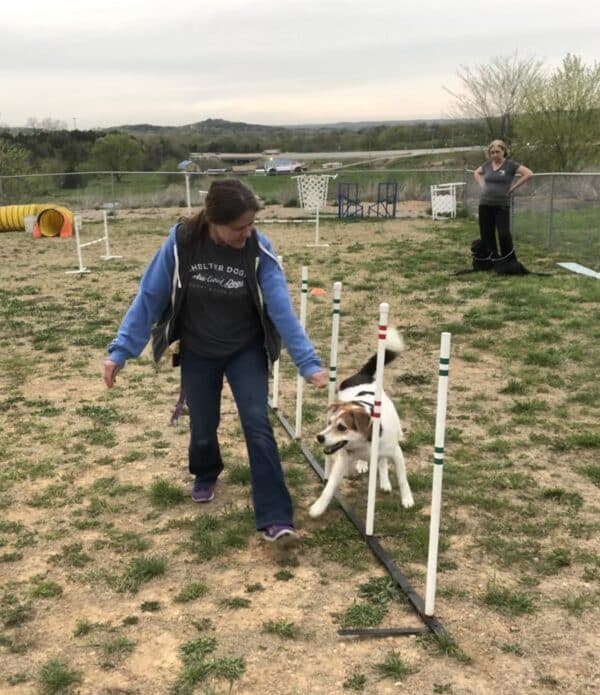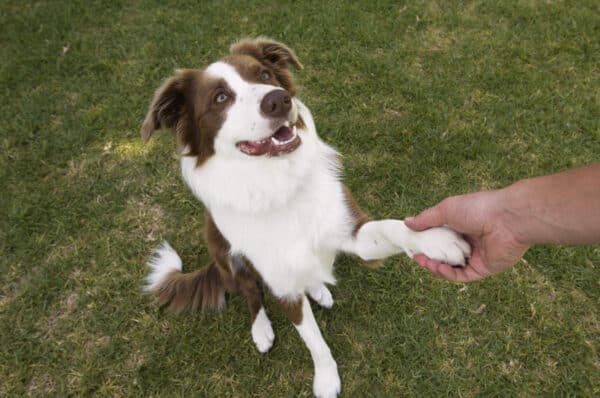Jasmine, my Chihuahua mix, came into my family when she was 6 months old. Five pounds of sweetness entered our lives, and we were overjoyed. All was well until I noticed that the edges of my kitchen cabinets and chair legs were rough and uneven from dog chewing. Running my fingers over the bottom corners of the kitchen island, I felt the shape of little teeth marks that had gouged into the wood. It was unmistakable — 5 pounds of puppy had redesigned my furniture seemingly overnight, and the damage was considerable.
There is nothing more frustrating than finding those telltale teeth marks on your favorite chair or returning to a chewed-up pillow or sofa, but dog chewing is just one of those doggie behaviors that makes absolute sense to a dog and fulfills an important need. Dogs don’t see value in a designer shoe or an expensive chair — chewing just feels good and is a potent way to relieve boredom, anxiety or stress.
Understanding dog chewing

Puppies chew as part of the teething process, which is usually between 4 to 30 weeks of age. Chewing on any object helps soothe the gums around the teeth, encouraging baby teeth to fall out and adult teeth to grow. During this period, puppies will also chew as a way of exploring objects and, like human babies, everything tends to end up in their mouths.
So, puppies and young dogs must be consistently supervised when running free around your home and in a safe, chew-resistant area when unsupervised. Make sure this “safe zone” is close to busier areas of the home, so your dog doesn’t feel isolated.
If you can’t find an appropriate room, try using a crate that you make into a safe, cozy den and use sparingly so it doesn’t become a long-term place to lock your dog away. You can also set your dog up for success by removing any items in your home that your dog might be tempted to chew, such as cables, shoes or kids’ toys.
Intense chewing usually subsides around 6 months of age, but many dogs continue into adulthood, particularly if they enjoy the activity.
Controlling dog chewing
Rather than scolding your dog for chewing, it’s much better to redirect him onto an object you don’t mind him chewing. Scolding your dog could encourage him to escape punishment by chewing when you’re not there, and it doesn’t address the reason why your dog is chewing. If you catch him in the act, simply redirect him onto a toy or object he can chew on, and quietly praise him for chewing on that object.
Provide appropriate chew toys for your dog to enjoy, but make sure they’re durable and able to withstand heavy chewing. You can keep your dog occupied and out of mischief by giving him a hollow chew toy with food inside while he relaxes in his safe zone or crate. Pay attention to the types of chew toys your dog likes, and give him times during the day when he can engage in active chewing that keeps his jaws strong and teeth clean.
Read more about appropriate dog chews >>
If you have a multi-dog household, encourage relaxation and avoid potential disagreements over valued chew toys by giving each dog a separate chew location, which will make their chew time a lot more enjoyable and stress free.
When it’s more than just chewing
If these suggestions are unsuccessful, your dog’s chewing might be related to a medical condition or be a symptom of a deeper anxiety issue. Destructive chewing usually occurs when a dog is left alone or becomes more pronounced when alone and is related to feelings of isolation, loneliness and panic. This is sometimes referred to as separation anxiety or distress and needs the help of a qualified positive trainer or veterinary behaviorist who will design a comprehensive behavior modification protocol that can be tailored to your dog’s specific needs.
If you suspect the chewing is related to a medical condition, take your dog to the veterinarian for a full checkup.
By following these easy steps and managing your home environment, destructive chewing can become a thing of the past, and your furniture, wallet and, most importantly, your dog will thank you for it.
Beyond dog chewing
Exercise and enrichment are so valuable for every dog and can help curb a dog’s desire to chew. A tired dog is a happy dog and has less energy to indulge in destructive behavior.
Find appropriate outlets for your dog’s energy. Physical exercise is important, but mental stimulation is crucial.
Enrich his life by playing fun games and giving him puzzles and interactive toys to play with.
Find a sport or activity you and your dog love to do to help release any pent-up stress or tension he might be feeling.
Thumbnail: Photography ©Chalabala | Thinkstock.
Victoria Stilwell, renowned dog trainer, TV personality, author and public speaker, is best known as the star of the hit TV series It’s Me or the Dog, through which she reaches audiences in more than 100 countries. Appearing frequently in the media, she’s widely recognized as a leader in the field of animal behavior, is editor-in-chief of positively.com, CEO of the VSPDT network of licensed trainers and the founder of the Victoria Stilwell Academy for Dog Training & Behavior — the leader in dog trainer education. Connect with her on Facebook and on Twitter at @VictoriaS.
Editor’s note: This article appeared in Dogster magazine. Have you seen the new Dogster print magazine in stores? Or in the waiting room of your vet’s office? Subscribe now to get Dogster magazine delivered straight to you!
Read more about dog behavior on Dogster.com:





